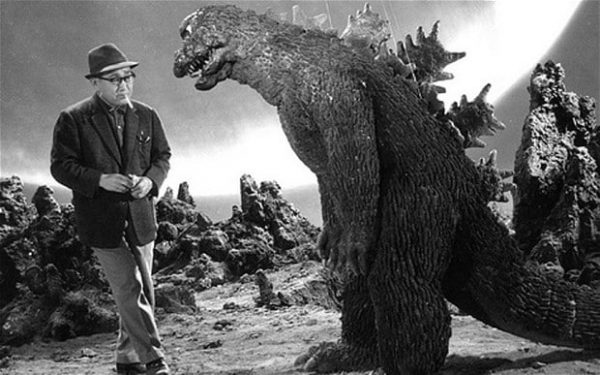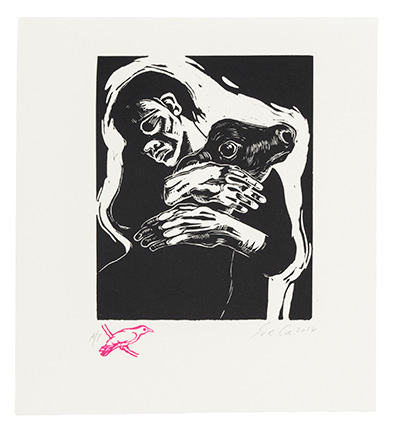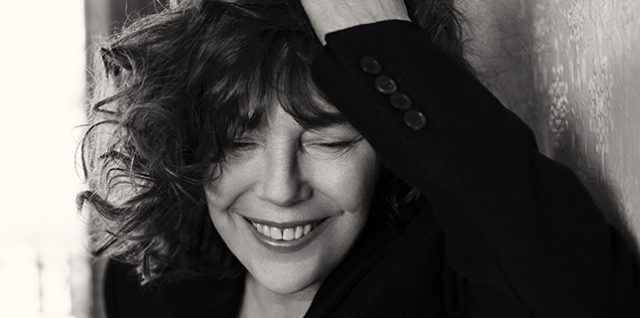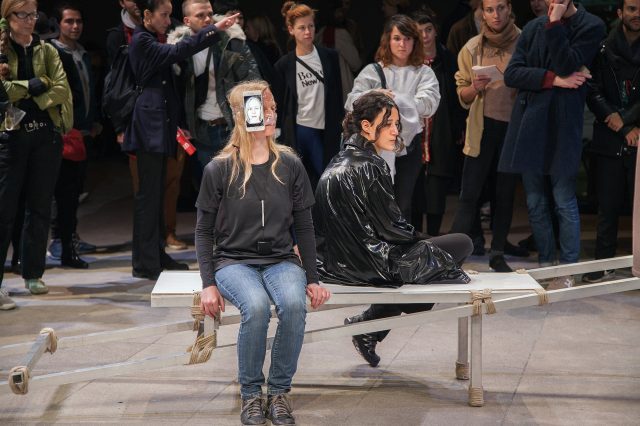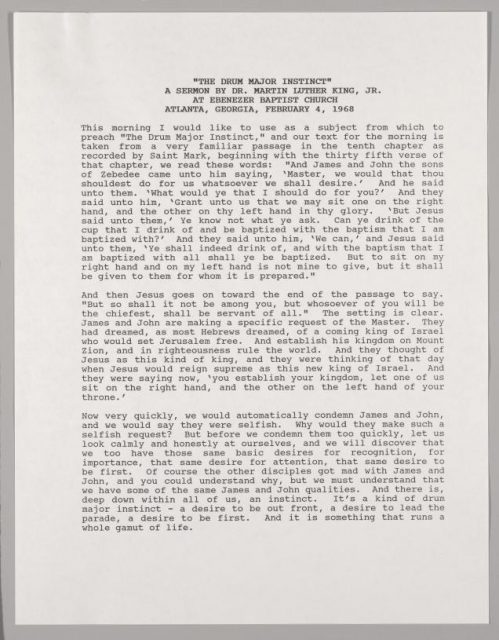
Brooklyn Public Library — Central Library
10 Grand Army Plaza, Brooklyn
Sunday, February 4, free, 2:00
www.bklynlibrary.org
theaterofwar.com
The Brooklyn Public Library and Theater of War Productions pay tribute to the fiftieth anniversary of Dr. Martin Luther King’s final sermon, “The Drum Major Instinct,” with a free dramatic reading at the Central Library branch at Grand Army Plaza on February 4 at 2:00. Inspired by the tenth chapter of St. Mark’s Gospel and J. Wallace Hamilton’s 1952 homily, “Drum-Major Instincts,” Dr. King delivered the speech at Ebenezer Baptist Church in Atlanta on February 4, 1968; he would be assassinated exactly two months later. “There is deep down within all of us an instinct. It’s a kind of drum major instinct — a desire to be out front, a desire to lead the parade, a desire to be first. And it is something that runs the whole gamut of life,” Dr. King said. The piece will be performed by American actress Samira Wiley, who starred as Moira in The Handmaid’s Tale and Poussey Washington in Orange Is the New Black, accompanied by the Phil Woodmore Singers, the gospel choir that performed in Theater of War’s adaptation of Antigone in Ferguson, Missouri, in response to the shooting of Michael Brown. Among the members of the choir are Duane Foster, a former teacher of Brown’s, and Lt. Latricia Allen, commander of the Community Engagement Unit of the St. Louis Metropolitan Police Department, in addition to other musicians, educators, activists, and police officers. The sermon will be followed by a guided audience discussion about racism and social justice, led by choir member and Ferguson social worker DeAndrea Blaylock-Johnson and Theater of War artistic director Bryan Doerries. “Every now and then I guess we all think realistically about that day when we will be victimized with what is life’s final common denominator — that something that we call death,” King preached. “We all think about it. And every now and then I think about my own death and I think about my own funeral. And I don’t think of it in a morbid sense. And every now and then I ask myself, ‘What is it that I would want said?’ And I leave the word to you this morning.”
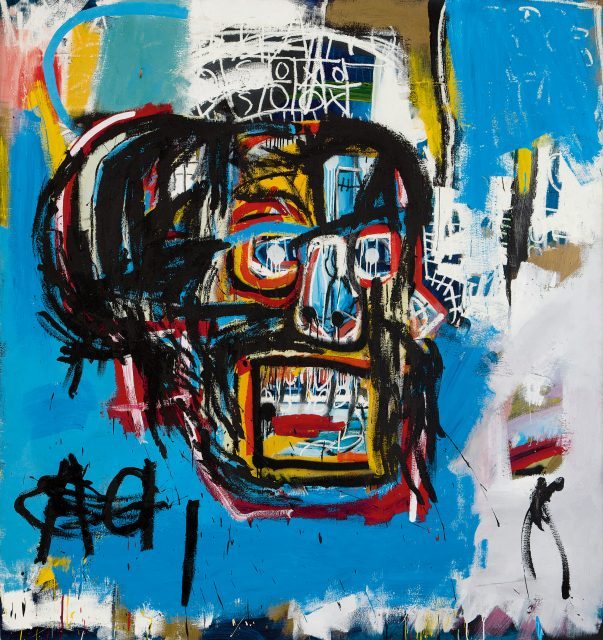
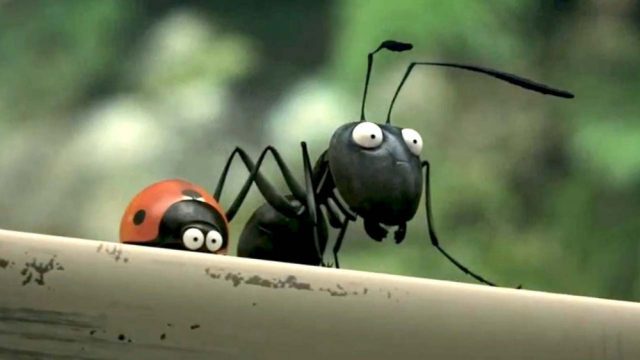
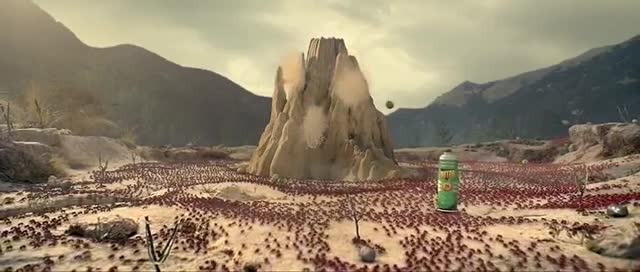

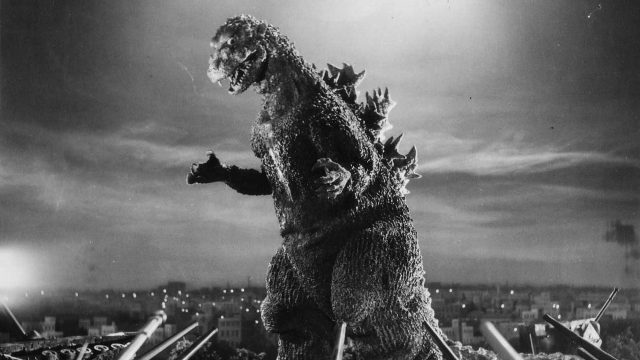
 More than two dozen sequels, prequels, remakes, and reboots have not diluted in the slightest the grandeur of the original 1954 version of Godzilla, one of the greatest monster movies ever made. If you’ve only seen the feeble, reedited, Americanized Godzilla, King of the Monsters!, made two years later with Canadian-born actor Raymond Burr inserted as an American reporter, well, wipe that out of your head. On February 2, Japan Society is screening the real thing, the restored treasure as part of its Monthly Classics series; it will be followed on February 21 with “Directing Godzilla: The Life of Filmmaker Ishirō Honda,” a talk with Steve Ryfle, author of Ishirō Honda: A Life in Film, From Godzilla to Kurosawa, moderated by Film Forum repertory programming director Bruce Goldstein, whose Rialto Pictures released the film in theaters in 2004 and 2014, followed by a book signing and reception with many old Godzilla posters and memorabilia items on view.
More than two dozen sequels, prequels, remakes, and reboots have not diluted in the slightest the grandeur of the original 1954 version of Godzilla, one of the greatest monster movies ever made. If you’ve only seen the feeble, reedited, Americanized Godzilla, King of the Monsters!, made two years later with Canadian-born actor Raymond Burr inserted as an American reporter, well, wipe that out of your head. On February 2, Japan Society is screening the real thing, the restored treasure as part of its Monthly Classics series; it will be followed on February 21 with “Directing Godzilla: The Life of Filmmaker Ishirō Honda,” a talk with Steve Ryfle, author of Ishirō Honda: A Life in Film, From Godzilla to Kurosawa, moderated by Film Forum repertory programming director Bruce Goldstein, whose Rialto Pictures released the film in theaters in 2004 and 2014, followed by a book signing and reception with many old Godzilla posters and memorabilia items on view.